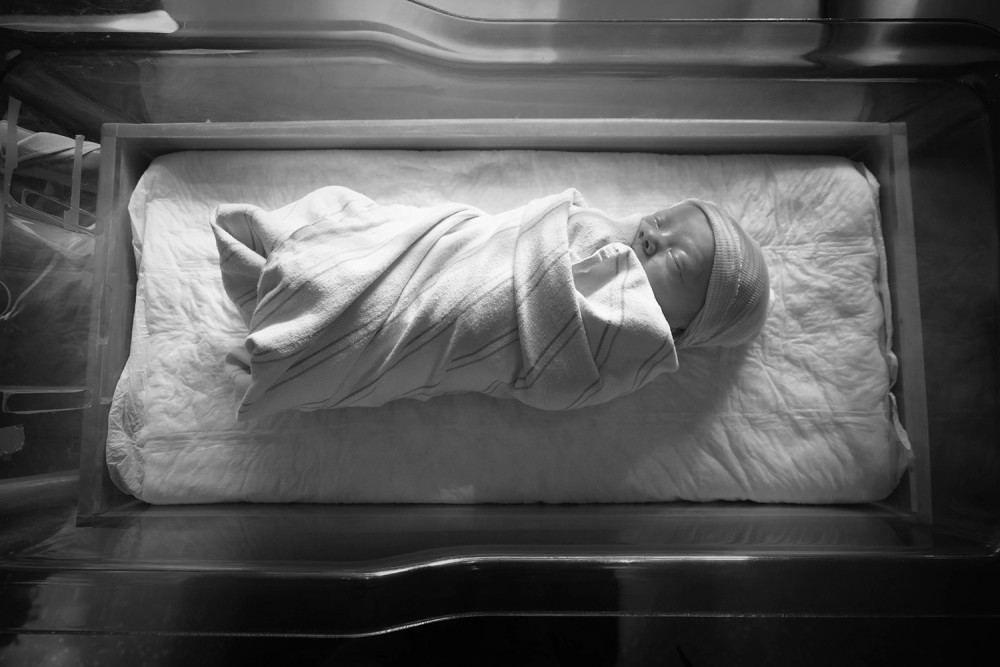Why does J. D. Vance want more American babies?
Pronatalists fixate on tomorrow’s imaginary children. Baptism demands that we care for those already born.

Shortly after his inauguration as Vice President, J. D. Vance spoke at the annual March for Life, an anti-abortion rally in Washington, D. C. “Let me state very simply,” he said, “I want more babies in the United States of America.”
This was a surprising comment. Usually the “life” part of “March for Life” refers to the idea that life begins at conception, and those marching against abortion do so for the sake of the not yet born. But Vance seemed to be talking about lives that, regardless of your views on when life begins, do not yet exist. He was marching for life in a quantitative sense: for more life.
Three months into the second Trump administration, it’s clear Vance was being quite literal. The Department of Education has been gutted, a man who believes children should not be vaccinated is in charge of public health, and the mass deportation dragnet has begun sweeping up even citizen children with cancer. What he wants is simply more American babies, not necessarily better lives for those babies.
Vance, as always, forms a crucial bridge between the self-styled traditionalists of the Christian right and the anti-traditionalists of the tech and finance capital worlds. It’s not easy holding together a coalition that includes conservative Christians who have spent a generation presenting themselves as the only true defenders of the family and Elon Musk, a man who the New York Times reports is building a remote compound where he apparently hopes to live with the three women and (at least) eleven children he has between them. In his March for Life speech, Vance hinted at one thread that holds this fractious group together: their anxiety that people aren’t having enough children.
This anxiety binding together the different factions of the contemporary right now has a name: “pronatalism.” Pronatalists are not all on the right, and they are not all Christians, but there are many who, like Vance, make a Christian case for having as many children as possible. Even the progressive Catholic journalist Elizabeth Bruenig, otherwise Vance’s political opposite, ended her recent critical dispatch from an April pronatalist conference by granting that their concerns are reasonable. Bruenig pleaded for the left not to “[yield] to the far right the notion that humanity ought to persist on the Earth.”
But this is exactly what Christians on the left should do. The pronatalist concern with an abstract “humanity” and its persistence in some far-flung future fixates on tomorrow’s imaginary children at the expense of the very real suffering and death of children alive today. Elon Musk dreams of future generations colonizing Mars and frets about declining birthrates leading to the end of civilization while he slashes foreign aid and consigns potentially millions of children to death from starvation and preventable disease. This is the kind of politics skewered by the queer theorist Lee Edelman as “reproductive futurism,” his term for the tendency in politics to value an imaginary future over the real present. By fleeing into fantasies of the future, Edelman writes, the awful realities around us are at once ignored and made worse, as more and more in the present is sacrificed in the name of an always receding future. Think of Donald Trump’s recent comments on his disastrous “Liberation Day”: there might be economic chaos now, but “in the end it’s going to be a beautiful thing.” Edelman’s point in No Future is that this “in the end” never comes. Tomorrow, as the song goes, is always a day away.
Against pronatalism’s reproductive futurism, Christians should shift attention away from imaginary futures and towards the present we do not wish to face. Above all, we should attend to the suffering and death of real children today—in war, from hunger and preventable disease, from hatred and bigotry. Fortunately, we regularly celebrate a ritual that can redirect our attention towards these terrible truths we would rather ignore: the ritual of baptism.
While baptism services are often raucous and joyful celebrations, the ritual itself is somber, as the church collectively names the evil powers that corrupt and destroy human life before initiating the newly born into Jesus’ death. Attending this unsettling proximity of birth and death in the baptismal rite can pull our attention away from distracting fantasies like “the persistence of humanity” and towards the children in our present who are suffering and dying and in need of our care.
“Do you not know,” Paul asks in the letter to the Romans, “that all of us who were baptized into Christ Jesus were baptized into his death?” While the baptismal ritual is for many churches a day of celebration when smiling families gather to welcome new children into the parish, it is also at the same time a sacrament of death. With this insistence on the awful proximity of birth and death, baptism stands as a rebuke to the reproductive futurism expressed by J. D. Vance and Elon Musk. Baptism demands that we turn away from what Edelman calls “the figure of the Child,” the imaginary future child who distracts us from present suffering and death, and toward the need and loss of children in our present.
Perhaps no one saw this funereal side of baptism clearer than the fifth-century theologian Cyril of Alexandria. While those baptized in his day were adults—as are many people who are baptized today—in a series of lectures he gave to the newly baptized he repeatedly reminded them that their new birth in Christ was at the same time the dying of his death. Each step of the ritual was for him a blurring of the lines between birth and death. The baptized were stripped naked, which imitated the nakedness of Jesus on the cross. The olive oil with which they were anointed made them “partakers of the good olive tree,” participating in both Christ himself and the tree on which he was killed. Their being taken to the baptismal pool imitated Christ’s being taken down from the cross and laid in the tomb. Dried with linen cloths after rising from the pool, they imitated Christ’s corpse being wrapped in linen. Long after Cyril, baptismal fonts continued to be carved to look like both wombs and tombs to drive the point home: there is no birth without death.
This is, for Cyril, the gloomy heart of the sacrament. “The saving water was at once your grave and your mother,” he says. “In the same moment you were dying and being born… One time brought both, and your death coincided with your birth.” What is true of our second birth in baptism was true of our first. From the moment we were born, we were already on the road to our death.
Pronatalism, with its preoccupation with the long-term future of the human race and its goal of more life for the sake of more life, wants birth without death. It asks us to look past the awful reality of the vulnerability of children and see instead the imaginary future they represent. It’s hard not to see the rise of pronatalism as a symptom of our degraded age: shedding tears over the child who will never be born because it is easier than shedding tears over the child deported or deprived of an education or bombed in Gaza. But it is this unbearable reality that children every day suffer and die that Cyril knew so well and that the ritual of baptism should, if we will let it, compel us to stare in the face.
The lesson of baptism is that children are not the future. They are the present. Instead of burdening children with assuring us of humanity’s future, we should ask whose children are burdened with our inhumanity today.




